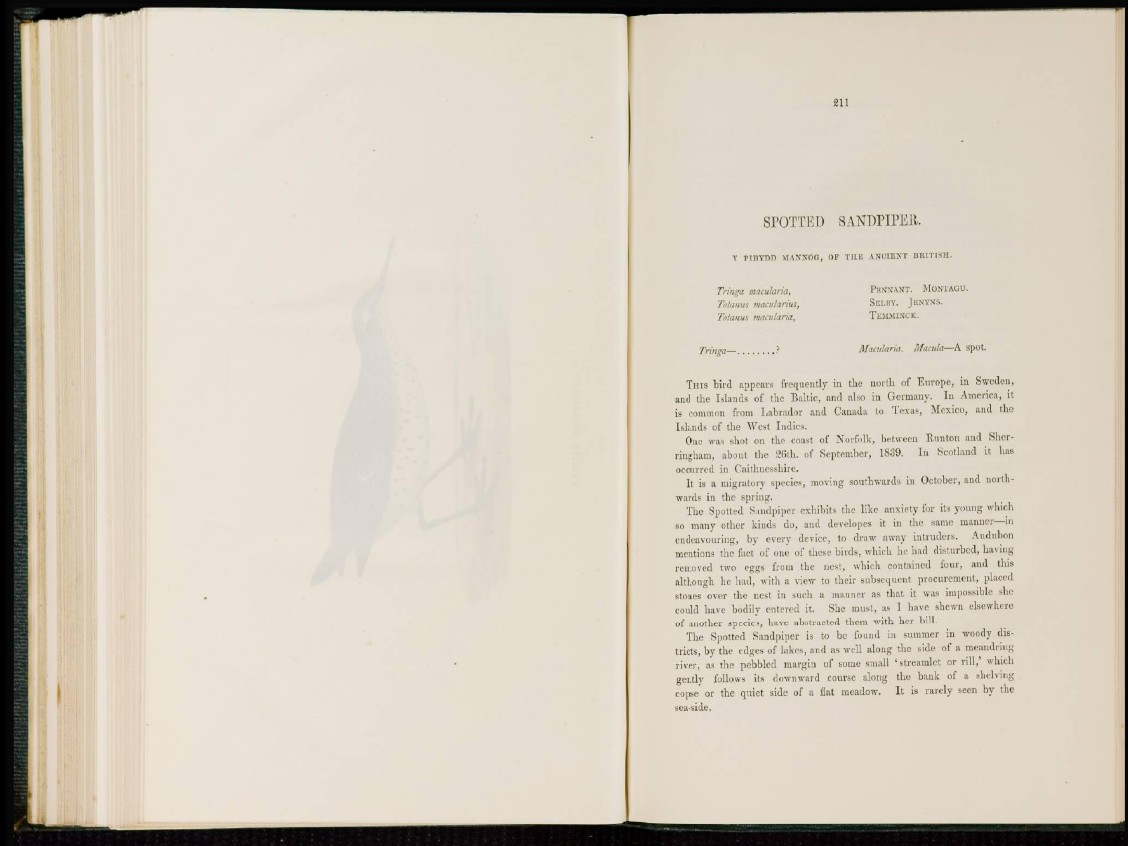
SPOTTED SANDPIPER.
Y PIBYDD MAK"NOG, OF THE ANCIENT BRITISH.
Tringa macularia. PENNANT. MONTAGU.
To/anus macularius, SELRY. JENYNS.
Totanus macularia, TEMMINCK.
Tringa— ? Macularia. Macula—A spot.
THIS bird appears frequently in the north of Europe, in Sweden,
and the Islands of the Baltic, and also in Germany. In America, it
is common from Labrador and Canada to Texas, Mexico, and the
Islands of the West Indies.
One was shot on the coast of Norfolk, between Runton and Sherringham,
about the 26th. of September, 1839. In Scotland it has
occurred in Caithuessbirc.
I t is a migratory species, moving southwards in October, and northwards
in the spring.
The Spotted Sandpiper exhibits the like anxiety for its young which
so many other kinds do, and developes it in the same manner—in
endeavouring, by every device, to draw away intruders. Audubon
mentions the fact of one of these birds, winch he had disturbed, Inning
removed two eggs from the nest, which contained four, and this
although he had, with a view to their subsequent procurement, placed
stones over the nest in such a manner as that it was impossible she
could have bodily entered it. She must, as I have shewn elsewhere
of another species, have abstracted them with her bill.
The Spotted Sandpiper is to be found in summer in woody districts,
by the edges of lakes, and as well along the side of a meandriiig
river, as the pebbled margin of some small 'streamlet or rill,' which
gently follows its downward course along the bank of a shelving
copse or the quiet side of a flat meadow. It is rarely seen by the
sea-side.